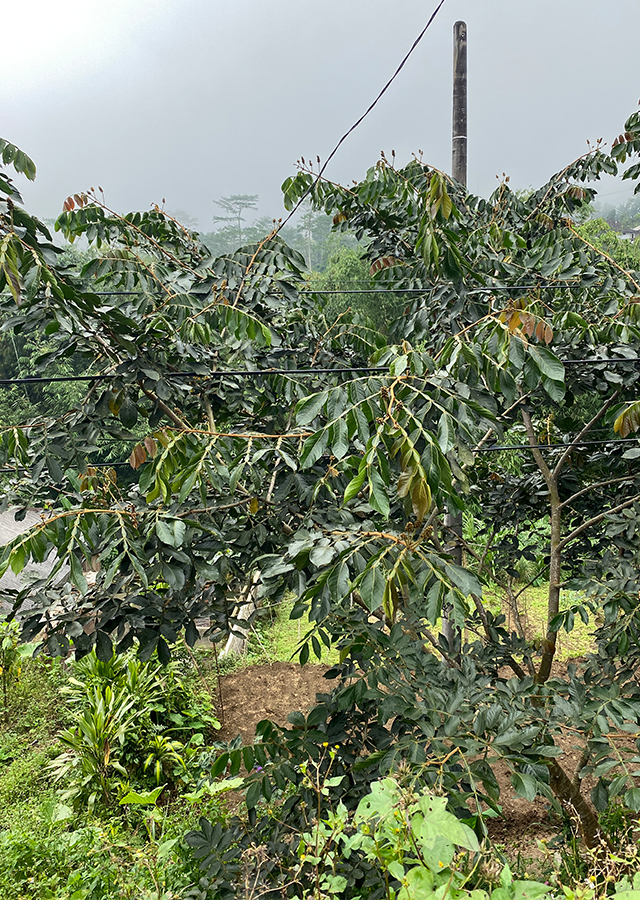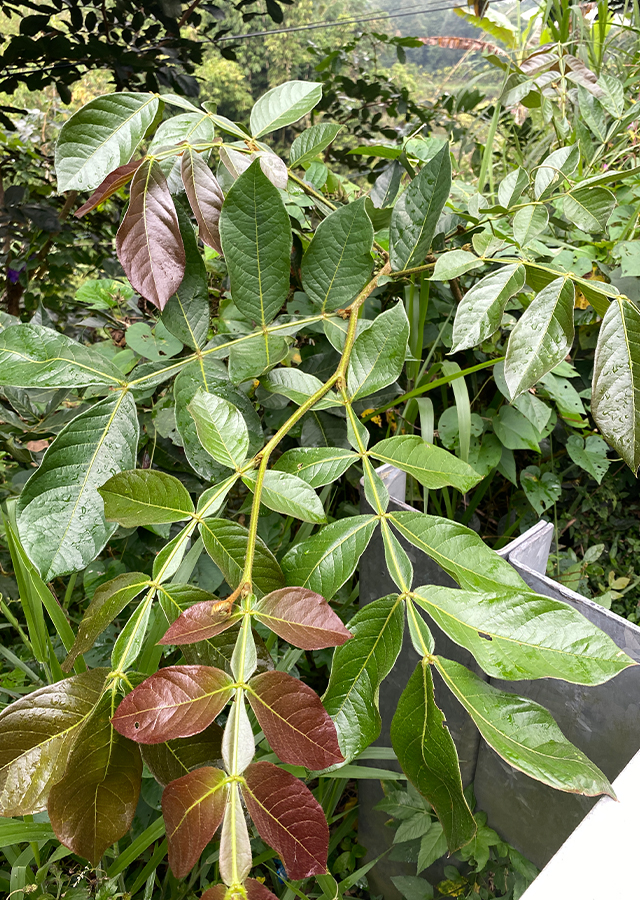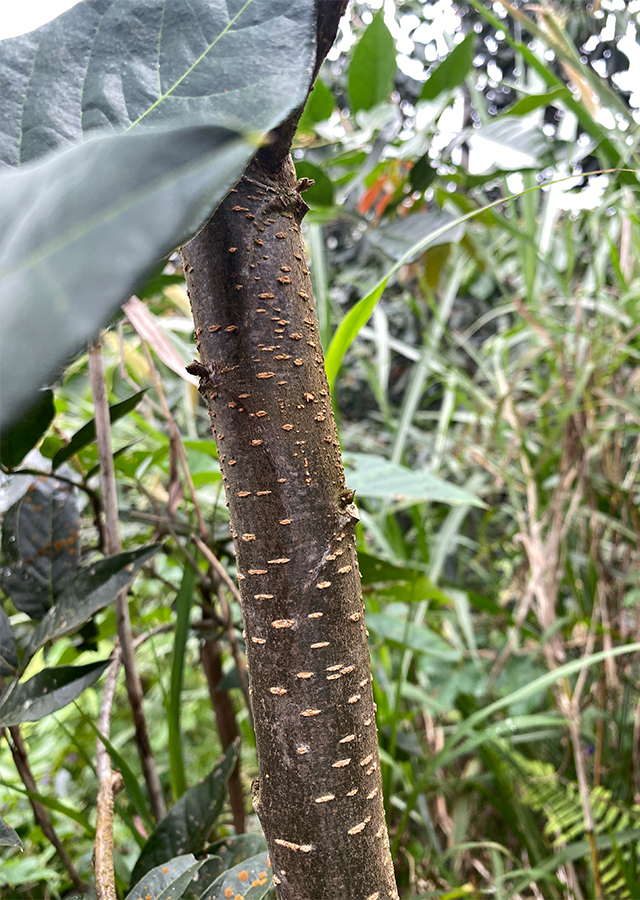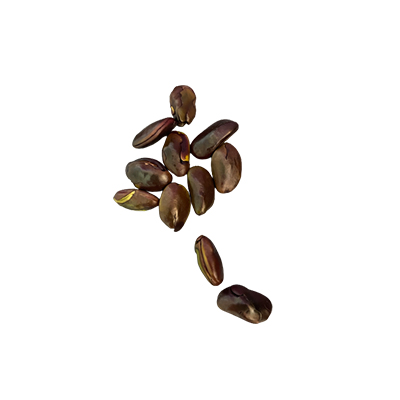Ice Cream Bean
Inga edulis Mart.
Fabaceae
Location in our garden
Orchard



Synonym
Feuilleea edulis (Mart.) Kuntze
Feuilleea conferta (Benth.) Kuntze
Inga conferta Benth.
Habitus
Trees. Annual tree, fast growing with a wide, spreading, and quite dense crown, up to 30 m high, 60 cm in diameter, usually branching from 3 m from the bottom
Part Used
Leaves
Seeds
Bark
Fruit
Growing Requirements
Full Sunshine
Need Shade
Drought Resistant
Habitat
Riverbanks
Forest
Overview
Ice cream bean or Inga edulis is a tropical plant from the Fabaceae family originating from Central and South America (Amazon, Bolivia, Brazil, Colombia, Ecuador, French Guiana, Guyana, Peru, Suriname and Venezuela). This species has naturalized in tropical and sub-tropical countries around the world. This plant is very popular in South America, because the fruit is edible and tastes like ice cream and is rich in vitamin A, calcium, protein and fiber, and low in calories and cholesterol. Indigenous peoples of the Amazon make extensive use of this species as a source of timber, shade trees, food, medicinal plants, and for the production of cachiri alcohol. Inga edulis also naturally fixes nitrogen from the air into the soil, enriches the earth around it and benefits the plants around it. As a source of wood, besides being used to make crates and packing piles, the wood is also popularly used as fuel, because the wood has a high calorific value. Based on its function as a medicinal plant, Inga edulis is also widely used in several countries as a traditional medicine, which is believed by the public to be able to overcome complaints of various diseases.
Vernacular Names
Guaba (South American)
Agroecology
Ice cream bean is a tropical plant in the hot, humid lowlands, which can also be found at altitudes up to 2,200 m asl. Its habitat is found growing in the floodplains of rivers, upland forest on the banks of rivers, adjacent rainforests, moist, wet, or sometimes slightly dry forests, or in open areas. In Peru, this species is found growing in scrub and forested swamps at elevations of 110 - 540 m asl. Ice cream bean or I. edulis does best in areas where the average annual daytime temperature is in the 23 - 30 °C range, but can tolerate 18 - 35 °C. Mature plants die at -2 °C or lower, while new growth is damaged at 0 °C and an average annual rainfall is in the range of 1200 - 2500 mm, but tolerates 640 - 4000 mm. Optimal growth of I. edulis requires a sunny position, but also succeeds in dappled shade. It thrives in all types of soil within a pH range of 4-8. This species can handle some waterlogging for 2 - 3 months each year and is also very tolerant of short periods of drought.
Morphology
- Stems - cylindrical, often wrinkled, often branching from near base. The branches form a wide, even, fairly dense canopy. The bark is pale gray and smooth, with pale elongated lenticels. Young twigs and stems are angular in cross section and covered with fine short brown hairs.
- Leaves - alternate, pinnate, about 10-30 cm long, with 4-6 pairs of opposite leaflets, oval, dark green, slightly pubescent. The terminal pair of leaflets is larger than the basal pair. Between each leaflet are nectar glands on rhachis leaves and these are large (2 to 3 mm). Leaflets and rhachis are covered with dense, short, coarse brown hair.
- Flowers - usually fragrant, has a calyx tube with 5 lobes (4 to 9 mm long), a corolla tube with 5 lobes (13 to 25 mm long), and a large number of white stamens up to 4.5 cm long, united in a tube at the bottom.
- Fruits - pods, longitudinally ribbed or ribbed cylinders, which may be straight, curved or often spirally twisted, yellowish brown to green in color. Inside the pods are green seeds covered by sweet, cottony, white flesh.
- Seeds - ovoid in shape, the number of seeds varies, 10-20 seeds, purplish black to olive in color.
Cultivation
- Propagation by seeds.
- The seeds germinate in 2-3 days (95 to 100% germination rate). Transfer the seedlings to individual containers when they have 4 - 6 leaves and after 4 - 5 months old the plants are ready for planting in large fields or gardens.
Chemical Constituents
Flavonoids (5,7,3 ́,4 ́-tetrahydroxy-3-methoxy-flavone; 6,3 ́,4 ́-trihydroxyaurone and 5,7,4 ́-trihydroxy-6,8-dimethylflavonone, gallic acid, catechin, epicatechin, myricetin-3-O-α-L-rhamnopyranoside, quercetin-3-O-α-L-glucopyranoside, quercetin-3-O-α-L-rhamnopyranoside).
Traditional Medicinal Uses
- Relieves coughs and canker sores.
- Helps heal sores on the lips due to herpes.
- Maintains eye health, heart health, the health of body cells.
- Helps lose weight, is good for muscle health (builds body muscles).
- Treats dysentery, diarrhea, rheumatism.
- Lowers cholesterol, controls blood sugar, strengthen bones, reduce excessive appetite.
- Improve the digestive system and nourish the digestive organs (constipation).
- Prevent flatulence and cancer.
- Relieve headaches, reduce stress and anxiety.
- Remove toxins from the body.
- Help heal irritation in gut lining that is guttural.
Part Used
Reference Sources
- Royal Botanic Gardens. Plants of the World Online: Inga edulis. https://powo.science.kew.org/taxon/urn:lsid:ipni.org:names:128451-2. 14-12-22.
- Healthbenefitstimes. 2021. Health benefits of Ice Cream Bean. https://www.healthbenefitstimes.com/ice-cream-bean/. 14-12-22.
- Plants For A Future. 2022. Inga edulis - Mart.. https://pfaf.org/user/Plant.aspx?LatinName=Inga+edulis. 14-12-22.
- Souza, J. N. S., Silva E. M., Silva M. N., Arruda M. S. P., Larondelle Y., Rogez H. 2007. Identification and Antioxidant Activity of Several Flavonoids of Inga edulis Leaves. Journal of the Brazilian Chemical Society, Vol. 18, No. 6, 1276-1280.



